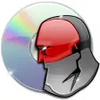Format a USB drive via a computer to create a bootable USB option for Windows
Format a USB drive via a computer to create a bootable USB option for Windows
Vote: (9 votes)
Program license: Free
Developer: Pete Batard
Version: (Reliable USB Formatting Utility) 1.1.6
Works under: Windows
Vote:
Program license
(9 votes)
Free
Developer
Version
Pete Batard
(Reliable USB Formatting Utility) 1.1.6
Works under:
Windows
Pros
- You can create live USBs using Rufus. Live USBs are bootable USB storage media that contain whole operating systems
- Rufus is used to flash BIOS and other types of firmware from DOS
- The software is small in size
- Many languages are supported including French, Spanish, Danish, Dutch, Portuguese, English, and Russian
- Rufus is free
- Rufus is faster compared to other utilities such UNetbootin when creating Windows 7 bootable USBs
- Rufus is portable; no installation is required
Cons
- Rufus does not support booting multiple operating systems from one drive
- Some users have encountered problems when creating Arch Linux images
- Windows XP installations are restricted to MBR mode
Rufus is an open source software utility used to create bootable USB drives. Rufus is available on the Windows platform only. Many new laptops are built minus DVD or Blu-ray drives; this can cause issues when one wishes to load another operating system. Rufus solves this problem by allowing a user to create USB devices that can be used to install operating systems. Rufus supports a broad range of Windows-based and Linux-based operating systems. There is support for all common Linux distributions such as Ubuntu, Red Hat, Debian, Fedora, Gentoo, Arch Linux, and Tails.
Rufus works with operating system images that are in various formats. There is support for ISO files, raw image files, and compressed files. Rufus also works with all Windows-supported file systems such as NTFS, FAT, exFAT, and FAT32. When creating Linux images, Rufus creates boot loaders that will make the drive bootable. The supported bootloaders are GRUB and SYSLINUX. Version 1.3.2 also added support for UEFI boot. If you want to test the image for corruption, Rufus provides functionality for computing SHA-256, SHA-1, and MD5 hashes. The hashes are used to verify the integrity of the operating system images.
Pros
- You can create live USBs using Rufus. Live USBs are bootable USB storage media that contain whole operating systems
- Rufus is used to flash BIOS and other types of firmware from DOS
- The software is small in size
- Many languages are supported including French, Spanish, Danish, Dutch, Portuguese, English, and Russian
- Rufus is free
- Rufus is faster compared to other utilities such UNetbootin when creating Windows 7 bootable USBs
- Rufus is portable; no installation is required
Cons
- Rufus does not support booting multiple operating systems from one drive
- Some users have encountered problems when creating Arch Linux images
- Windows XP installations are restricted to MBR mode




